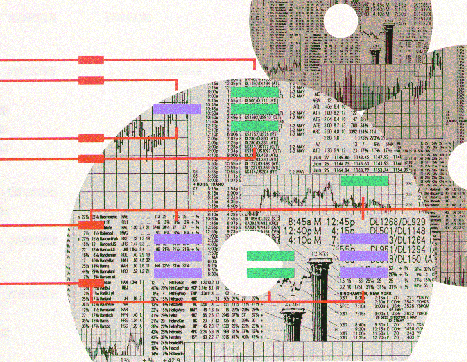|
 Howard M. HayaKawa,
Howard M. HayaKawa,
Manager, VMS I/O and Cluster Development
George S. Hoff,
Group Manger, High-availability systems
Beginning as a vision for a highly availalbe and expandable computing envikronment, Digital's VAXcluster system is today recognized across the industry as the premier foundation for creating high-availability applications. The large number of VAXcluster sites and the range of their use testifies to the wide appeal of the capabilities of VAXcluster systems. Over 11,000 VAXcluster sites based on Digital's Computer Interconnect (CI) are being used in such diverse applications as manufacturing operations, banking, and telephone information systems. Sites based on the Digital Storage Systems Interconnect (DSSI) and Ethernet are even more numerous. A scan of software licenses shows an amazing acceptance of VAXcluster technology - over 200,000 VAXcluster licenses have been sold to date.
Built from standard loosely coupled, highly integrated configuration of VAX VMS processors and storage systems that operate as a single system. Signigicantly, CAXcluster systems are so well integrated that users are often not aware that they are using a distributed system. In addition to the benefits of tight integration, these configurations provide Digital's customers with the flexibility to easily expand and with the features needed for high-availability applications.
Started in 1984, VAXcluster systems were limited to speciaized, proprietary interconnecs and storage servers, which restricted them to the confines of a single server room. In 1989, the cluster system was extended to support both industry-standard SCSI (small computer systems interface) storage and Digital's DSSI storage interconnect. Today, VAXcluster and DSSI, abd ubdystry-standard local area networks such as Ethernet and FDDI. Storage systems now supported cover the spectrum from standard, economic SCSI peripherals to high-performance RA-series drives for large configurations. This well architected system allows for expansion across an ever wider geography: from room to building to multiple buildings. Moreover, the entire range of VAX processors - from VAXstation workstation to VAX 9000 mainframes - are supported. The tight integration, flexibility, and power of today's VAXcluster systems is unparalleled.
The VAXcluster architecture which Digital initiated in the 1980s continues to encompass new advances and innovative technologies that ensure data availability and inegrity. This issue of the Digital Technical Journal presents several new VMS VAXcluster products and features, and complementary developments in the areas of network adapters and performance. One of the products described is VMS Volume Shadowing Phase II which permits users to place redundant data on separate storage devices where most appropriate within the system, thus dramatically increasing the availability of VAXcluster able to add parallel LAN connections to increase network capacity and to survive failure of a network connection. With shadowing and multiple communication paths, recovery from site failure need no longer incur the delays associated with restoration from archives. Just as the VAXcluster software was able to exploit the Ethernet to extend cappabilities throughout a building, it is now able to exploit the high performance and extent of an FDDI LAN.
The new industry-standard FDDI LAN allows the VAXcluster software to extend the systems range by a factor of 1.000. Papers on both an Ethernet adapter and an FDDI adapter describe the care taken to ensure that adapter performance matches that of the target processor, which is one of the keys to achieving maximum peformance in the overall VAXcluster system. Performance of the FDDI LAN itself is alson on of the topics included here. FDDI's performance and range permit for the first time the ability to create integrated, high-availability solutions that span multiple buildings. With combined FDDI and VMS VAXcluster technology, a bank's VAXcluster system can extend from a computer center in Manhattan to application into operation in New Jersey after only minutes. The days of waiting for archives or driving disks across the river are over.
Digital's VAX VMS, clusters, FDDI, and networking products continue to evolve; the process of integrating new tecdhnologies is ongoing. The papers in this issue describe the latest steps we have taken to extend the range and availability of VAXcluster systems. Future issues of the Journal will keep you apprised of the latest stages in this evolutionary process.
|
|